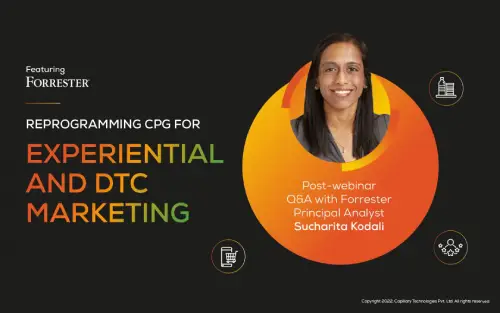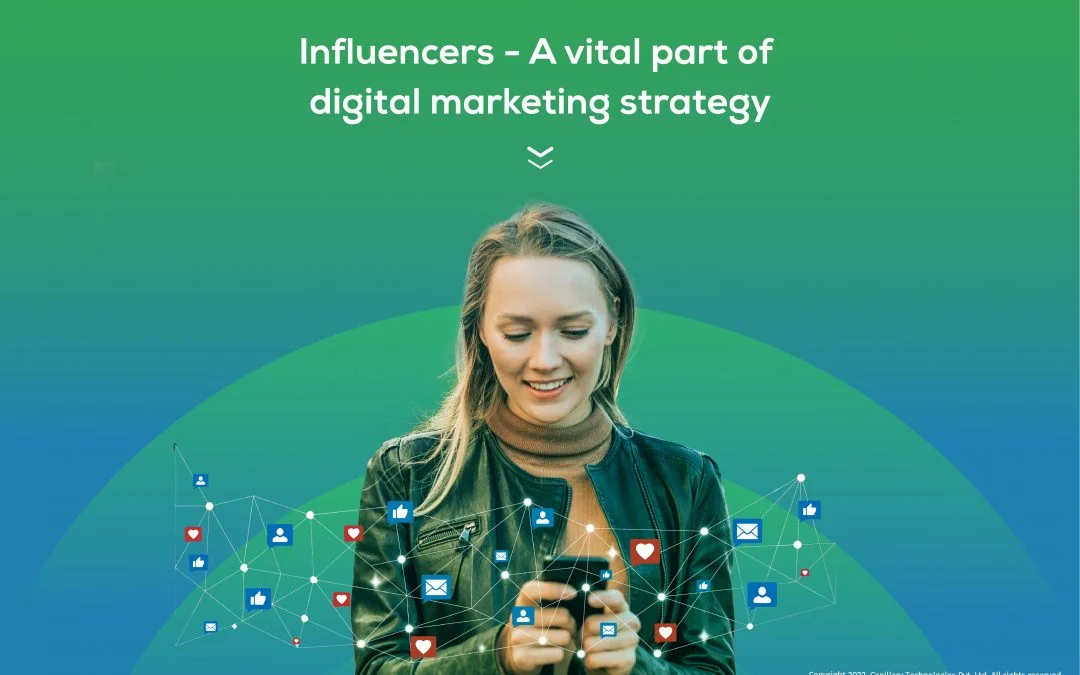- Design industry shaping loyalty programs
- Integrate easily and go live quicker
- Deliver hyper-personalized consumer experiences
Blue Rewards from Al Futtaim Group Shares Loyalty Success Stories and Evolution. Watch Podcast >
Capillary Announces 2nd Annual Captivate 2025 Summit: Transforming Loyalty Management with New AI Tech Read more >

To rebound, transform and thrive – this is the central theme of the current CPG industry. The worst of the pandemic is behind us, and CPG brands need to transition from being pandemic-responsive to navigating the way forward. Companies need to focus on tracking changing consumer preferences, identifying new micro pockets of growth, and becoming more agile to pursue fresh opportunities.
In this scenario, data analytics is the key to accurately identifying consumer demand. Brands need to base their analytics on an updated understanding of customer behavior- analyzing both short and long term behavior changes. Evidently with data and digitization taking the centrestage, where do Indian CPG companies stand today in adopting these advancements in their processes and technologies? In The Economic Times Leadership Dialogue presented by Capillary Technologies, top CPG leaders including Vivek Sharma (CMO, Pidilite), Ameya Dangi (COO, HRIPL), Neeraj Agarwal (Director, Haldiram’s), Jatinder Singh (AVP, Amway India) and Sheena George (Partner Technology Consulting, EY) joined Capillary’s CEO Aneesh Reddy to unearth the current CPG trends in the Indian landscape.
During the pandemic, the demand for DIY activities has gone up. Vivek Sharma revealed how this has translated to the rise in demand for Pidilite products such Dr. Fixit. Apart from product demand, consumers were also looking for video content to teach them how to fix or repair things, which the brand ramped up. The brand also saw a boost in demand for arts and crafts products and videos as children needed to be kept occupied. Vivek mentioned, “The behavior of people and contractors changed and brands can no longer talk in a linear way to consumers.”
Neeraj Agarwal also shared that Haldiram’s launched DIY kits that contained ingredients to prepare a dessert, based on consumers’ increased interest in cooking a variety of dishes at home. Globally, such DIY kits have been available across various countries and are fairly new to India.
As the world is on the cusp of moving on from the pandemic, are all sales going to be digital? Amway’s Jatinder Singh has a different thought. He agrees that over the past two years many habits were developed. For example, the store footfalls have increased since they have opened up, but people still continue to pay via digital modes, demonstrating that a hybrid ‘phygital’ is being born. “How much of these (pandemic) habits will remain, and how many will fall apart? The next 6 to 8 months will be critical to understanding this,” predicted Jatinder.
Ameya Dangi also agreed to this, adding that many D2C companies have recently grown in the other direction. “The concept of D2C might blur in the future. You see a lot of D2C brands go into the physical world, you see brands like Nykaa setting up stores, which means that for the D2C players to scale up, they need the physical world.”
However, Sheena George from EY brought in another perspective, claiming that the need for touch and feel will cease to exist one day. “The touch and feel element is slowly fading away because experts are talking about the metaverse, more and more digital elements, and about the simulation of real experiences like simulating taste and smell. There’s lots of innovation that’s happening out there.” She also believes that in India physical touch is here to stay with a majority of the population being rural.
Adding his views on the physical touch, Aneesh Reddy said, “It’s not just the touch and feel, it’s also access to the product. So when you look at the BIBA e-commerce site, they sell more products in tier 3 or tier 4 cities rather than tier 1. And the answer is simple – it’s access!“
While offline stores are typically found in tier 1 cities, the e-commerce platform has certainly opened up access to people from across the country regardless of where they order from. Online orders have increased in rural areas also because of the work-from-home culture where employees are working from their hometowns.
Digital channels have curiously made smaller stores more accessible as well. Jatinder shared his experience with a kirana store owner who had adapted to social media marketing. He explained how the store owner had created an Instagram account to interact with his customers, share products or deals of the day, and created an easy and accessible shopping experience by offering free delivery.
With the presence of data and digital, it becomes imperative to use them to focus on groups of consumers and to address their specific needs to retain them. This process is not something that can be done physically, and brands need to rely on digital tools and skilled marketers to cater to customers’ behavioral changes. Powered by AI, the right tools can help make sense of the vast data and curate personalized journeys to keep customers hooked to the brand.
Parallelly, the digital marketing quotient of the marketer needs to increase including senior members in the marketing team. Vivek commented, “We have to unlearn and learn, and I have been doing a lot of that myself.” As CPG brands traverse into the data-rich digital journey, accurately-captured data, talented marketers, and the right analytics tools are key to gain an exponential trajectory.

March 28, 2022 | 4 Min Read
With more than one-third of consumers continuing to switch b

March 15, 2022 | 4 Min Read
To rebound, transform and thrive – this is the central the

January 17, 2025 | 4 Min Read
CPG brands are turning to influencer marketing and creator-l